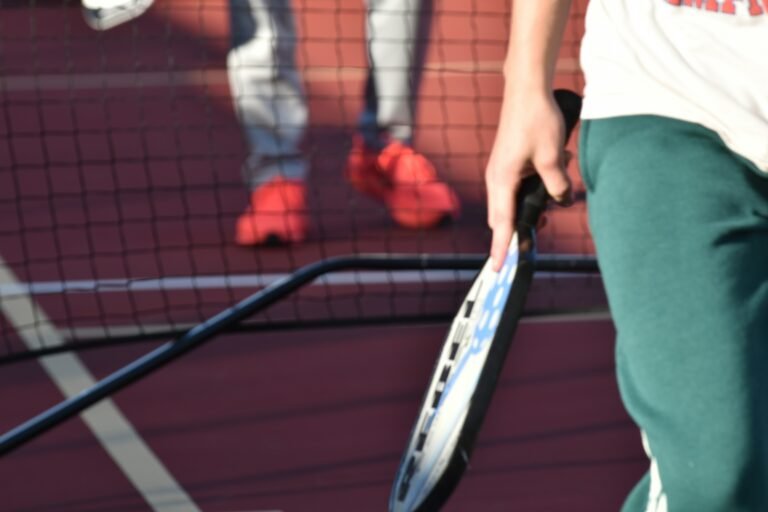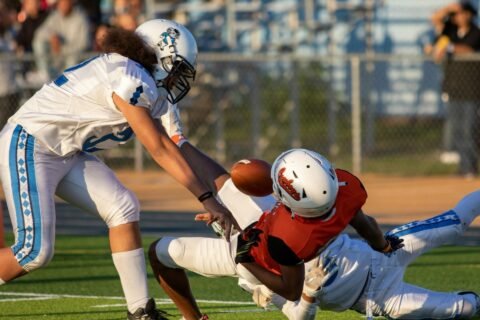Photo by Lesli Whitecotton on Unsplash
Pickleball, a blend of tennis, badminton, and ping-pong, has swiftly gained popularity for its accessibility and engaging gameplay. If you’re a new player eager to dive into the action, understanding the basics can set you on a path to enjoying this exciting sport. Here’s a guide to help you get started with confidence and enthusiasm.
Understanding the Basics
Before stepping onto the court, it’s crucial to familiarize yourself with the fundamental rules and equipment of pickleball. The game is played on a court that is 20 feet wide and 44 feet long, divided by a net that stands 36 inches high at the sidelines and 34 inches at the center. Players use a paddle to hit a perforated plastic ball, known as a pickleball, over the net.
Get the Right Gear
Investing in the right equipment is key to a successful start. Here’s what you need:
Paddle:
Pickleball paddles are designed to be smaller and lighter than tennis rackets, and they are made from materials such as wood, composite, and graphite. For newcomers to the game, a lightweight paddle with a comfortable grip is the best choice. The Joola pickleball paddle, for instance, offers an excellent balance of lightweight design and ergonomic comfort, making it a great option for beginners looking to enhance their game.
Ball:
Pickleball balls are made from plastic and come with either holes or dimples. Indoor balls usually have smaller holes, while outdoor balls have larger ones to handle different playing conditions.
Footwear:
Proper footwear is essential. Pickleball requires lateral movements and quick direction changes, so opt for court shoes with good traction and support.
Learn the Basic Rules
Pickleball is played in either singles or doubles format. The objective is to score points by hitting the ball over the net and into the opponent’s court. Here are some basic rules to get you started:
Serving:
The game begins with a serve. Players must serve from behind the baseline, diagonally across to the opponent’s service court. The serve must be underhand and the paddle must contact the ball below the waist.
Non-Volley Zone:
The area 7 feet from the net on either side is the non-volley zone, also known as the kitchen. Players cannot volley (hit the ball before it bounces) from within this zone.
Scoring:
Games are typically played to 11, 15, or 21 points. Only the serving team can score points. Players score a point when the opposing team fails to return the ball correctly.
Faults:
A fault occurs when the ball is hit out of bounds, into the net, or if a player breaks a rule, such as stepping into the non-volley zone during a volley.
Master the Serve
The serve is the most crucial aspect of starting a pickleball game. Here are some tips to master your serve:
Proper Stance:
Stand behind the baseline with your feet shoulder-width apart. Hold the paddle with both hands and position the ball in front of you.
Underhand Technique:
Use an underhand motion to serve the ball. Swing the paddle gently and aim to hit the ball with a slight upward trajectory. This technique makes it easier to control the serve and keep it in the correct area.
Aim for the Opponent’s Weak Spot:
When serving, try to place the ball where your opponent is less likely to return it effectively. Aim for the corners or their weaker side.
Practice Your Serve:
Consistent practice will help you improve your accuracy and power. Work on your serve regularly to develop a reliable and effective technique.
Develop Your Strategy
Once you’ve got the basics down, it’s time to think about strategy. Here are some tips to enhance your gameplay:
Positioning:
Always be aware of your position on the court. Stay near the center to cover both sides effectively. In doubles, communicate with your partner to avoid collisions and cover the court efficiently.
Shot Selection:
Pickleball is as much about strategy as it is about skill. Use a mix of shots—such as dinks (soft, controlled shots) and smashes (powerful shots)—to keep your opponent guessing and off balance.
Stay Low and Balanced:
Maintain a low stance to move quickly and respond effectively to your opponent’s shots. Good balance helps you execute better shots and recover faster.
Read Your Opponent:
Pay attention to your opponent’s movements and shot patterns. Adjust your position and strategy based on their playing style and weaknesses.
Have Fun and Stay Positive
Pickleball is designed to be fun, regardless of your skill level. Don’t be discouraged by mistakes or early challenges. Instead, focus on the enjoyment of learning and playing the game. Engage with fellow players, participate in local events, and celebrate your progress.
In Conclusion
Starting out in pickleball can be an exciting and rewarding experience. By understanding the basics, investing in the right gear, mastering your serve, and developing strategic play, you’ll be well on your way to becoming a confident player. Embrace the learning curve, have fun on the court, and enjoy the camaraderie of this rapidly growing sport.





